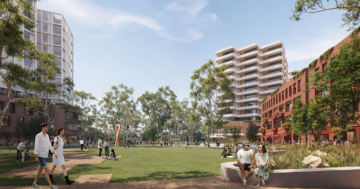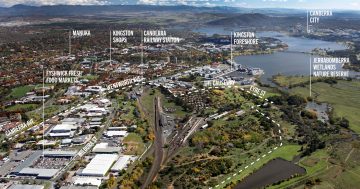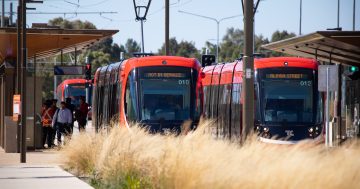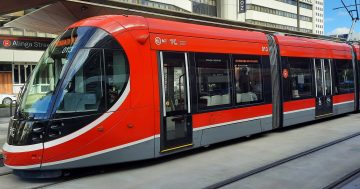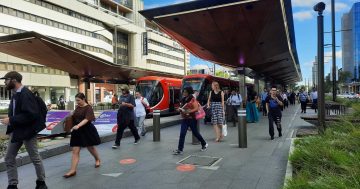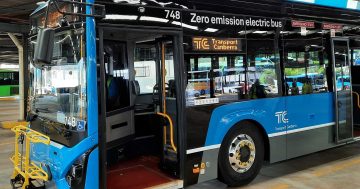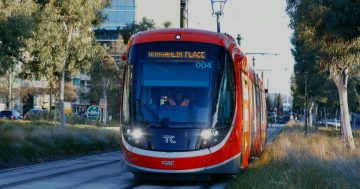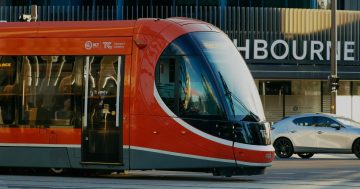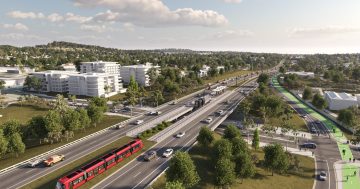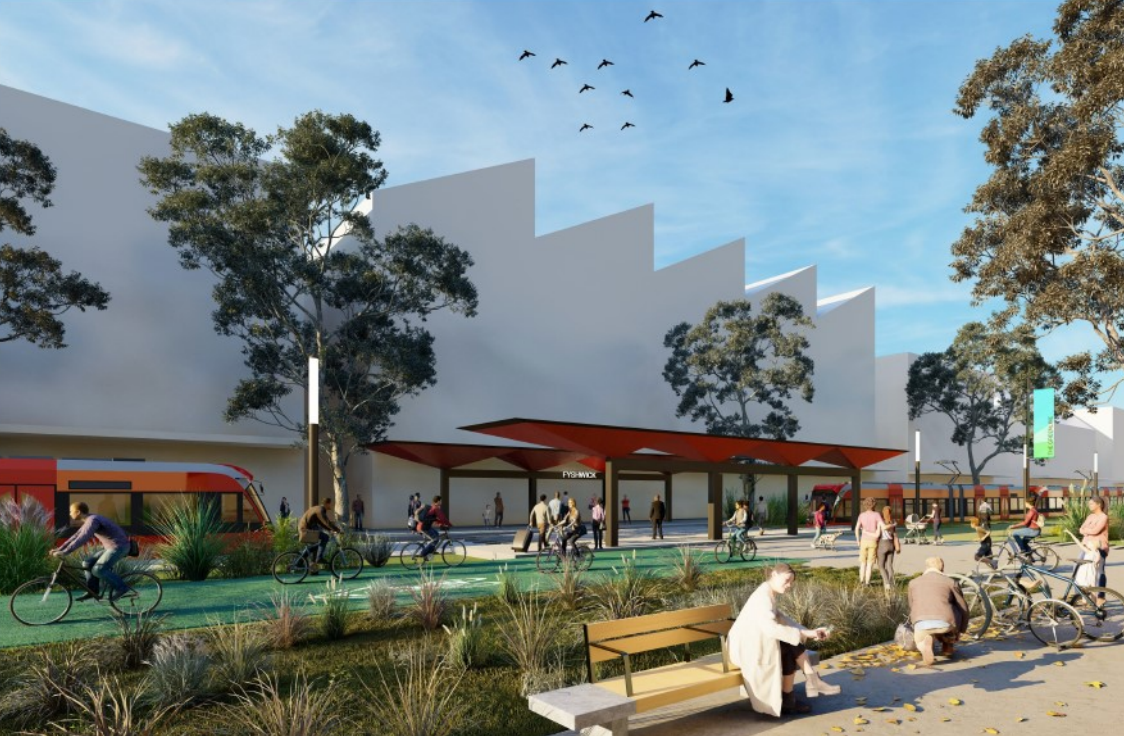
The Fyshwick light rail and active transport concept provides many ideas for applications across the ACT. Images: Stewart Architecture.
There will be plenty of people who will dismiss the plan for a Fyshwick light rail stage and cycleway using the existing heavy rail corridor as just another pie-in-the-sky proposal that will never be built.
Or that it is a real estate development project, not a public transport initiative, that taxpayers will help fund.
Or that buses are a better bet than light rail.
Like any high-level concept, there will be a lot of detail that needs to be worked out, but overall, Stewart Architecture’s imagining of what could be possible in the inner south is not only worth considering but commendable for how it attempts to transform what is the mess from the Kingston Railway Station to Fyshwick into a cohesive new residential district with public and active transport.
It shows what might be possible, and vision is required if that part of Kingston and Fyshwick is to contribute to Canberra’s desperate need for more housing.
The ACT Government is already planning for 8000 to 9000 dwellings in East Lake, which will need transport links, but the space is there for much more, and why not along a light rail route, the textbook method of densification?
The rail line is hardly used and the corridor is ready-made for a development like this.

A schematic plan for East Canberra precincts and light rail.
Removing the embarrassment that is the Kingston Railway Station and replacing it with a modern multimodal transit hub with park-and-ride in east Fyshwick makes sense.
Real estate and transport are not mutually exclusive and selling land for development along the route to offset the cost is a long-held way of financing rail ventures.
The proposal envisages buildings of up to five storeys, concentrated at stops, that would likely be mixed-use to provide residents with the meeting places and services they will need.
Those opposed to high density will never be on board, but this is the appropriate type of housing for a project and location like this and doesn’t have to mean soulless blocks.
In fact, the vision of Stewart Architecture’s Felicity Stewart and Marcus Graham for a treelined carless avenue, the Greenline, takes its inspiration from linear parks and people-friendly transit ways from overseas. These include the Arbutus Greenway in Vancouver and the New York High Line. This sort of green infrastructure has had a dramatic and positive impact on neighbourhoods and the cities themselves.
What city in Australia would be better suited than Canberra to create such a link?
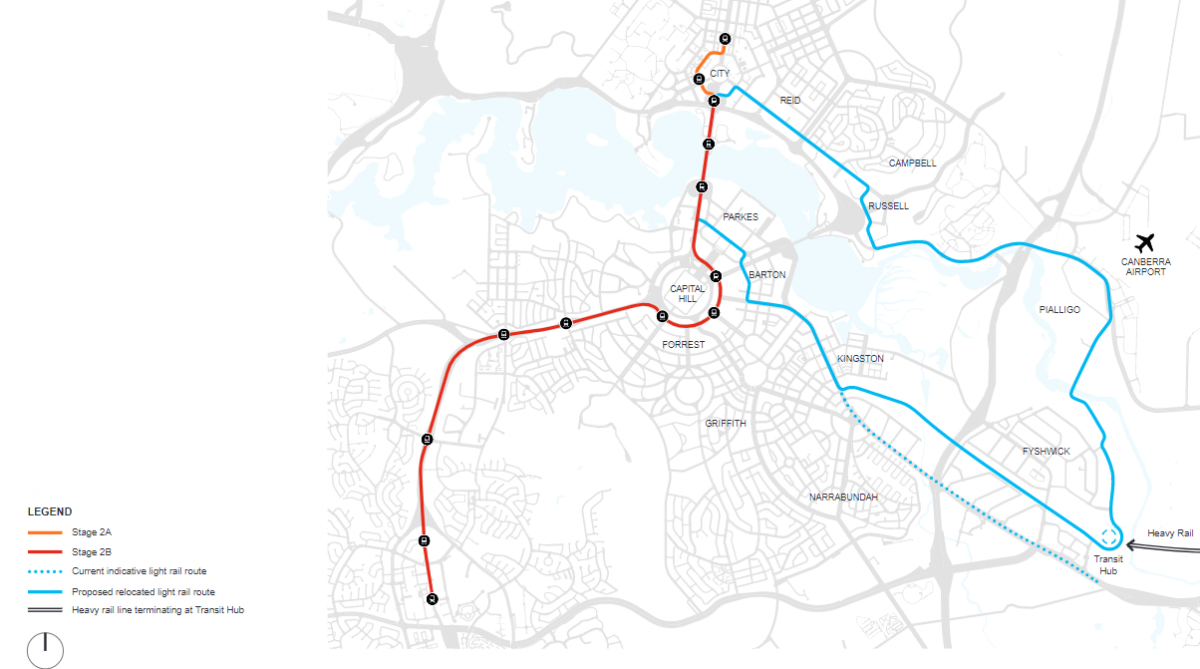
The Fyshwick route and loop to Canberra Airport and back to the city and the Parliamentary Triangle.
When it comes to the buildings, Stewart is thinking more Paris than Northbourne Avenue. But that’s for the designers and ACT planning authority to settle.
For those who argue buses offer better value, tell that to the people who use light rail already, who love its quiet, clean, direct running or those clamouring for it across Canberra.
But really, both light rail and zero emissions buses, including busways, can be part of a multimodal network, and the principle of what the Fyshwick proposal is trying to achieve remains.
For Fyshwick itself, the plan brings it properly into the inner south and connects it to what are at present disparate parts.
Anyone who visits Fyshwick will, at times, be lost in its maze of winding streets, and catching a bus will take at least half an hour to get out of the place, depending on where you board.
A north-south link will bisect the area and provide a central spine and direct entry and exit points.
The Fyshwick Business Association obviously sees a benefit for the district as it continues to evolve and diversify, including greater visitation through a direct public and active transport link.
A loop back to Canberra Airport also makes sense.
It will be easy to pick holes in such a high-level concept, but the better way will be to take up the urban renewal challenge that it issues and ideas that fit with the livable city ideals.
Government is taking it seriously and light rail is included in the draft inner south district strategy for the new planning system.
What government needs to do is somehow get on with its light rail plans and get across the lake so a Fyshwick line can actually be an option.
It needs to build a network, but a stage every decade is too long to wait, so the big question is, does the government have the capacity to build concurrent stages?
Otherwise, light rail for all is going to be a very slow train coming.












